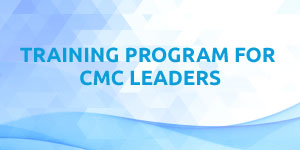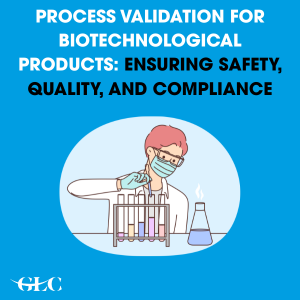Free knowledge to monitor the world of events. Have a look at our must read Blogs on Pharma, Finance, HR, Health and Cross Industry.
Process Validation for Biotechnological Products: Ensuring Safety, Quality, and Compliance
2022-08-16
For biotech products, including vaccines, monoclonal antibodies, and cell or gene therapy, the risk is particularly high.
In biotechnology, the generation of innovative products and treatments is only the first step. No less important is to ensure that such products are consistently manufactured to meet rigorous standards for safety, quality, and efficacy. This is where process validation comes in.
What is Process Validation?
Process validation is the collection and examination of data, from design to commercial manufacturing, that proves scientifically that a manufacturing process can consistently make a quality product.
For biotech products, including vaccines, monoclonal antibodies, and cell or gene therapy, the risk is particularly high. They are sensitive-to-environment, complex products that differ significantly from the traditional small-molecule drugs.
Why It Matters in Biotechnology?
Compared to traditional chemical drugs, biotech products come from living sources, and thus are more complex and sensitive. Process validation provides:
- Regulatory confidence: Compliance with global standards by regulatory bodies such as the FDA, EMA, and WHO.
- Consistency of the product: Guarantee that each batch is consistent in safety and effectiveness.
- Risk control: Early detection and management of variation to prevent costly deviations.
- Operational efficiency: Streamlined processes reducing waste and increasing long-term reliability.
The Lifecycle Approach
Modern validation follows a three-stage lifecycle approach, as outlined in FDA guidance and adopted globally:
Process Design
- Establishing a scientific understanding of critical quality attributes (CQAs) and critical process parameters (CPPs).
- Developing control strategies through laboratory studies, risk assessments, and scale-up studies.
Process Qualification
- Verifying that manufacturing systems, facilities, and utilities operate in accordance with GMP requirements.
- Conducting qualification batches (typically three consecutive successful runs) to demonstrate reproducibility at commercial scale conditions.
Continued Process Verification (CPV)
- Implementing a program of ongoing monitoring.
- Utilizing statistical process control (SPC), trending, and real-time analytics to maintain the process in a validated state.
Key Challenges in Biotechnology
- Biological variability: Cell cultures or microbial systems are by nature variable, and stringent controls on the process are required.
- Complex purification: Removal of impurities such as host cell proteins, DNA, or viral contaminants requires multi-step purification.
- Rapid innovation: Cell and gene therapies make traditional validation approaches more complicated.
- Regulatory scrutiny: Regulatory authorities increasingly require robust data-driven validation supported by risk-based decision-making.
Best Practices for Compliance and Efficiency
For GMP compliance and process streamlining, leading biotech companies adopt:
- Quality by Design (QbD): Building quality into the process from the beginning of development.
- Risk-based validation (ICH Q9): Prioritizing validation activities on high-risk process steps.
- Digital and automation tools: Leveraging Manufacturing Execution Systems (MES) and Process Analytical Technology (PAT) for real-time monitoring.
- Cross-functional governance: Ensuring continued alignment between R&D, Quality Assurance, Regulatory, and Manufacturing.
- Continuous improvement: Updating control strategies as new data and technologies emerge.
Conclusion
For biotechnology products, process validation is not simply a technical exercise, a regulatory requirement and patient safety. A validated process ensures every dose manufactured is uniform, reproducible, and of worldwide GMP standards.
In an industry in which innovation moves forward at a rapid rate and regulatory oversight is severe, process validation bridges the distance between scientific research and dependable patient therapy. It translates complicated biology into safe, reproducible, and compliant biopharmaceutical manufacturing.
Do you want to understand more? Join our upcoming Process Validation for Biotechnological Products Masterclass
By Shara Najimudeen, Digital Marketing Executive, GLC Europe, Colombo Office, Sri Lanka.
Get a feel for our events

Training Program for CMC Leaders - EU edition
27th October 2025 - 16th January 2026
Rich with practical insights and real-world applications
learn more >>
Training Program for CMC Leaders - US edition
27th October 2025 - 16th January 2026
Rich with practical insights and real-world applications
learn more >>
Mastering the Common Technical Document (CTD) for Biologics Masterclass - EU edition
12-16 January, 2026
From guidelines to submissions
learn more >>















